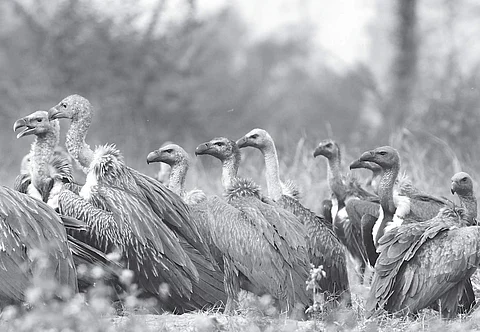

BENGALURU: Here is some bad news as far as the vulture population in India is concerned. A recent study conducted by Bombay Natural History Society (BNHS) and Royal Society for the Protection of Birds (RSPB) reveals that vulture population is still alarmingly low in the country.

In view of the declining population, Karnataka has even formed a dedicated vulture sanctuary in Ramanagara district - the Ramdevarabetta Vulture Sanctuary. But, despite many protective and conservation measures, the population in this exclusive protected area (PA) for raptors remains dismal.
The survey studies were conducted by leading experts, including Dr Vibhu Prakash (BNHS), Toby H Galligan (RSPB) and others. Vultures were counted on road transects in and around and along roads between protected areas distributed across 13 states.
Three critically endangered species -- the slender-billed vultures, the white-rumped vultures and the Indian vultures -- were surveyed near protected areas across 15,000 kilometres. While the number of both the Indian vultures and slender-billed vultures saw a dip, there was an increase in the population of white-rumped vultures.
Scientists say the countrywide ban on Diclofenac (a painkiller drug for cattle, but poison for vultures) seems to have had little impact on their population.
In the South, vultures are found only in two places - Wayanad and Bandipur-Nagarhole. Here too, their population is less.
International Species Recovery Officer and SAVE Vulture Programme Manager, RSPB, Chris Bowden explains that in all the southern states, the situation is bad and the vulture population is extremely low.
“We do not have proper figures. Just one or two places were surveyed in South. That is because of the low-level population. Many parts in the south have no vultures. The re-assessment of vulture population on a national scale is most accurate as sightings are closer to national parks.”